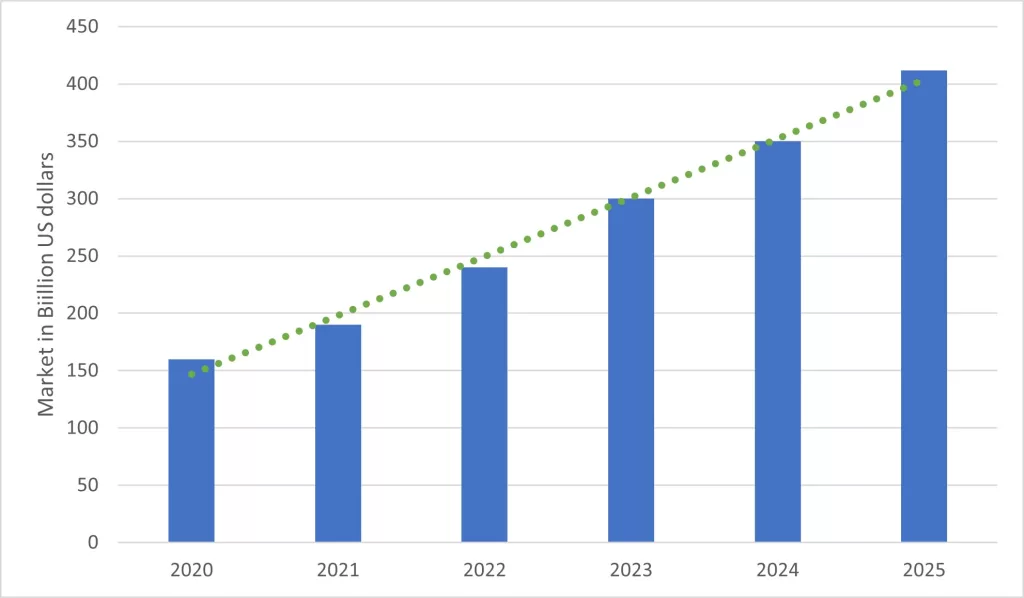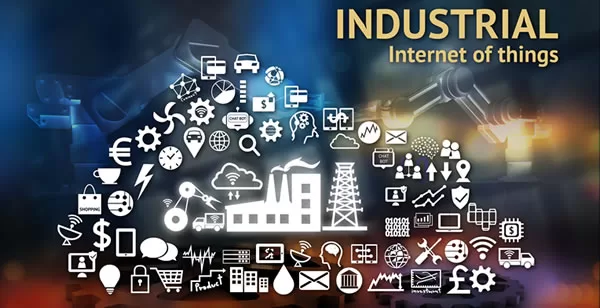Introduction
Efficient energy management has become a paramount concern in today’s industrial landscape. With a growing emphasis on sustainability, cost reduction, and environmental responsibility, businesses are seeking innovative ways to optimize their energy consumption. In this pursuit, the advent of the Internet of Things (IoT) has ushered in a new era of energy management, revolutionizing the way factories and industries approach their power usage.
The IoT, a network of interconnected devices and sensors, is now being harnessed to monitor and control energy consumption within industrial settings. Let’s explore how IoT sensors, strategically installed in various energy-consuming sources, are reshaping the landscape of energy optimization, offering businesses the means to cut costs while simultaneously reducing their carbon footprint.
The IoT Revolution in Energy Management
IoT sensors, strategically deployed throughout these industrial settings, have become the linchpin of this revolution. These sensors are engineered to collect real-time data on energy consumption patterns and provide invaluable insights into how energy is utilized within a factory.
One of the primary advantages of IoT sensors in energy management is their capacity for continuous monitoring. Unlike periodic assessments or manual readings, these sensors operate around the clock, tirelessly tracking energy consumption across various sources.
Moreover, IoT sensors offer an unprecedented level of granularity in energy monitoring. These sensors can be installed in a wide array of energy-consuming sources, ranging from heavy machinery and production lines to lighting systems, heating, ventilation, and air conditioning (HVAC) units.
The benefits of this IoT-driven revolution extend beyond mere data collection. The data collected by these sensors can be analyzed using advanced analytics and machine learning algorithms.
Consequently, it enables businesses to implement proactive energy management strategies that minimize waste, reduce costs, and contribute to environmental sustainability.
Unlocking the Potential of IIoT for Enhanced Energy Optimization
The Industrial Internet of Things (IIoT) is revolutionizing industrial operations, offering substantial benefits and demonstrating its critical importance in the field. The IIoT industry is experiencing explosive growth, with remarkable statistics highlighting its significance:
Soaring Investment: The investment in IoT for Industrials is witnessing exponential growth. Starting from just under $160 billion, it is projected to surge to an astonishing $412 billion by 2025. This remarkable increase underscores the tangible value organizations see in adopting IIoT for optimizing their operations and achieving enhanced energy efficiency.

Figure 1: Global Internet of Things (IoT) in energy market size 2020-2025 (Data from IoT-Analytics.com)
More IoT Connections: The number of IoT connections is expanding at an unprecedented rate, with forecasts indicating a staggering figure of over 25 billion connected devices by 2025. Within this expansive ecosystem, Industrial IoT stands out with an expected deployment of eight billion devices, showcasing the industrial sector’s eagerness to harness the power of IIoT for energy optimization.
IIoT’s transformative impact on industrial energy optimization is substantiated by substantial investments, exponential growth in IoT connections, and its increasing adoption across diverse sectors. These trends underscore the paramount importance of IIoT as a catalyst for driving efficiency and sustainability in industrial operations.
Sensors in Action: Monitoring Energy Consumption
The heart of the IoT revolution in energy management lies in the remarkable capabilities of sensors actively monitoring energy consumption within industrial settings. These sensors, strategically placed across factories and manufacturing facilities, operate in real-time to provide a comprehensive view of how energy is utilized. Let’s delve into how these sensors operate and the valuable insights they bring to the table.

Figure 2: Energy Monitoring & Management Example
Real-Time Data Collection
IoT sensors are a vigilant presence within industrial spaces, continuously collecting data on energy consumption patterns. Unlike traditional sporadic assessments, these sensors operate 24/7, offering a dynamic and current perspective on energy utilization. This real-time data collection ensures that no nuances or shifts in energy usage go unnoticed.
Advanced Analytics
Collecting data is only the first step. IoT sensors take energy management a significant leap forward by integrating advanced analytics and machine learning algorithms. These tools crunch the data, unveiling consumption patterns, detecting anomalies, and identifying areas where energy is being underutilized or wasted.
Continuous Improvement
The beauty of data analytics is its iterative nature. By continuously collecting and analyzing data, businesses can identify trends, assess the impact of implemented changes, and fine-tune their energy management strategies. This ongoing process of improvement results in long-term sustainability, cost reduction, and increased operational efficiency.
Proactive Energy Management
The actionable insights gleaned from IoT sensor data empower businesses to adopt proactive energy management strategies. By recognizing trends and potential issues in real-time, they can make immediate adjustments to optimize energy consumption. For instance, if a sensor detects an unusual spike in energy usage during non-production hours, it could signal a malfunction or inefficiency that requires attention. This proactive approach not only minimizes waste but also reduces operational costs.
Case Study: Axiomtek’s Solar Energy Optimization Solution
In response to the escalating demand for the commercialization of solar energy, Axiomtek has introduced an innovative solution leveraging their ICO300 embedded system and proprietary software, AXView. This solution serves as the central intelligence hub for optimizing solar energy operations, as illustrated in the diagram below. The architecture encompasses key components, including the solar station’s front end, Axiomtek’s intelligent controlling unit (comprising both hardware and software), and a cloud-based backend.

Figure 3: Axiomtek’s Solar Energy Optimization Solution
Front-End Solar Station: The initial segment of the solution focuses on the front-end solar station, where ambient solar panels are organized into a solar photovoltaic (PV) array. These solar panels are interconnected with PV inverters responsible for converting the variable direct current (DC) output generated by the solar PV array into alternating current (AC). This AC power can be either integrated into the commercial electrical grid or distributed through a local network.
ICO300 Gateway and AXView Software: Axiomtek’s ICO300 gateway, featuring an RS-485 interface and utilizing the Modbus protocol, is strategically connected to the PV inverters. This gateway acts as the communication bridge, facilitating seamless data exchange between the PV inverters and the controlling unit.
Simultaneously, the AXView software, situated within the intelligent controlling unit, plays a pivotal role. It meticulously collects a wide array of crucial data points, including voltage, current, sunlight intensity, temperature, and humidity, among others. This data is then harnessed to provide comprehensive insights and analytics, contributing to the efficient management of the solar energy station.
Cloud-Based Integration: The final component of this solution involves transmitting the accumulated data to the Microsoft Azure cloud platform. This is achieved through either a 3G or Wi-Fi connection, ensuring the real-time availability of data for display and in-depth analysis. The cloud-based backend serves as the repository for all collected information, offering a powerful platform for monitoring, assessment, and optimization of solar energy operations.
In summary, Axiomtek’s integrated solution showcases their expertise in optimizing solar energy utilization. By combining cutting-edge hardware in the form of the ICO300 gateway with their AXView software and cloud-based capabilities, Axiomtek empowers solar energy stations with the intelligence needed to enhance performance, increase efficiency, and ultimately contribute to the wider adoption of sustainable energy sources.
Challenges and Future Trends
While IoT-driven energy management has made remarkable strides, several challenges persist, and future trends are poised to shape the landscape of energy efficiency and sustainability further.
- Data Privacy and Security: As IoT devices proliferate, ensuring the security of sensitive energy data remains a critical concern. Protecting against cyber threats and safeguarding user privacy must remain at the forefront of IoT energy management strategies.
- Interoperability: The diversity of IoT devices and platforms can hinder seamless integration. Establishing industry standards and protocols for interoperability will be pivotal in streamlining IoT deployments.
- Scalability: Adapting IoT solutions to accommodate the growth of energy-consuming assets can be complex. Scalability challenges must be addressed to ensure continued effectiveness.
- Energy Source Diversity: As renewable energy sources become more prevalent, managing the integration of diverse energy inputs while maintaining stability and reliability is a complex challenge.
- Edge Computing: Edge computing, where data is processed locally on IoT devices rather than in distant data centers, will gain prominence. This reduces latency, enhances real-time decision-making, and minimizes data transfer volumes.
- Blockchain Integration: Blockchain technology will play a role in enhancing the security and transparency of energy transactions, enabling peer-to-peer energy trading and efficient grid management.
- Energy as a Service (EaaS): The “Energy as a Service” model will gain traction, allowing organizations to consume energy services rather than owning and managing energy infrastructure directly.
- Decentralized Energy Grids: Distributed energy resources, like rooftop solar panels and small-scale wind turbines, will contribute to the rise of decentralized energy grids, empowering consumers to generate and share energy.
- Circular Economy: Embracing circular economy principles, IoT systems will enable the tracking and optimization of material and energy flows in support of sustainable practices.
- Policy and Regulation: Evolving policies and regulations will continue to shape the energy landscape. Governments and industry bodies will play a crucial role in incentivizing IoT-based energy efficiency initiatives.
Conclusion
The adoption of IoT in energy management holds immense promise, with tangible benefits ranging from cost savings to reduced carbon footprints. As the technology matures and addresses existing challenges, it will play an increasingly pivotal role in shaping a sustainable and efficient energy future. By embracing these trends and surmounting challenges, organizations can lead the way toward a greener and more energy-efficient world.
References
- Ding Zhang et al. “Enabling Industrial Internet of Things (IIoT) towards an emerging smart energy system”, 2018.
- Elimelech M., Phillip W.A. “The future of seawater desalination: energy, technology, and the environment”, 2011.
- https://www.axiomtek.com/
- https://www.statista.com/

